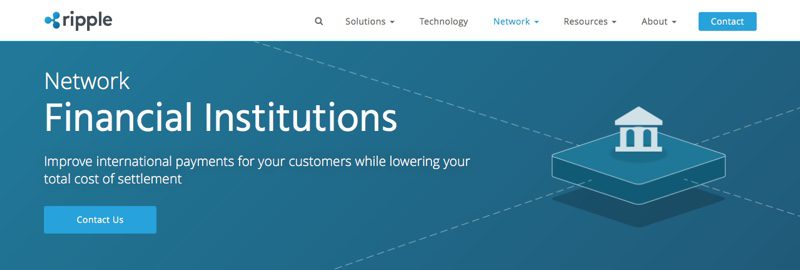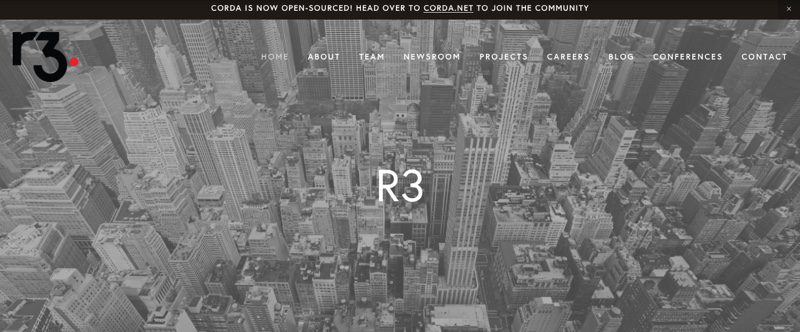
What blockchain trends from 2016 are worth watching for follow-through in 2017? Here are five blockchain players to keep an eye on as the new year begins.
IBM: Something Old, Something New, Something Blue
It is remarkable that a company that is more than 100 years old (“International Business Machines”) is one of the leading innovators when it comes to the blockchain. But IBM (FD16) began 2016 by introducing its strategy to offer cloud-based products and services for business via blockchain technology. IBM’s “blockchain-as-a-service” strategy incorporates many of the company’s core technology projects including its Watson Internet of Things platform and its development lab, Bluemix Garage – as well as its core IT system for global banks, IBM z System. IBM’s blockchain strategy also includes its participation in the open source, Linux-driven Hyperledger Project (demonstrated at FinDEVr). Just this week, a commodity trading and agribusiness software provider, The Seam, that has “cleared or processed” $7 billion, announced it would be joining IBM’s blockchain consortium.
IBM is not the only major technology company to pursue the blockchain-as-a-service model. Microsoft, which launched a blockchain sandbox in October 2015, partnered with Ethereum collective, ConsenSys to give its enterprise clients access to an Ethereum blockchain-as-a-service network. This will enable business users of Microsoft’s Azure to easily build and deploy “private and semi-private or consortium blockchain networks.” Note also that Microsoft partnered with AMIS to launch Asia’s first blockchain consortium in December.
That said, IBM distinguishes itself from Microsoft’s efforts by being fairly IBM-centric in its offering. Jerry Cuomo, IBM VP of blockchain technology, told CoinDesk: “What we’re doing is we’re picking a specific fabric and a specific point of view. We’re not interested in any fabric,” Cuomo explained, “we’re interested in one that can support business applications. We’re a bit more opinionated on what fabric is needed.”
International Business Machines, indeed.
And when it comes to ascertaining the appetite for blockchain, IBM has done its homework. In a survey of 200 banks, IBM learned that 65% of respondents “plan to have projects in production” in the next three years. Areas of focus include clearing and settlement, wholesale payments, equity and debt issuance, and reference data. Respondents to a different survey of 200 global FIs revealed that 14% planned to deploy commercial blockchain products in 2017.
Ripple Rolls On with Big Investment, New CEO
Among blockchain startups, Ripple (FS13) has been a key player in helping FIs leverage its technology to build blockchain networks. The company announced a partnership with leading corporate Nordic bank SEB late in 2016 to build an “internal, closed blockchain” that will enable the bank to transfer money in real time between accounts in New York and Stockholm. Ripple is also involved in India’s Axis Bank and it plans to use Ripple’s network for real-time settlement of cross-border transactions.
2016 was a major year for Ripple. The company announced a number of new additions – including Santander, UBS, CIBC, and Standard Chartered – to its global network. Ripple’s network now includes 15 of the top 50 global banks as well as “10 banks in commercial deal phases, and over 30 bank pilots completed.” Ripple’s digital currency, XRP, was part of blockchain consortium, R3’s 12-bank cross-border payments trial in October. The company picked up $55 million in Series B funding in September, taking Ripple’s total capital to more than $93 million. Ripple also appointed a new CEO, Brad Garlinghouse, who has previously served as the company’s president and COO.
“The continued growth of the Ripple network represents a major endorsement of our open approach to connecting the world’s bank and their customers,” Ripple co-founder and former CEO Chris Larsen said. Larsen, who will transition to the role of Ripple chairman of the board at the beginning of 2017, added: “Together we are building a modern payments system to enable new economic opportunities and the seamless flow of value around the world.”
R3: Are Blockchain-Curious Banks Stronger Together?
One way to measure the progress of blockchain technology is by keeping track of the comings (and goings) of members of R3, the world’s largest blockchain-based cooperative. Founded in 2014 and with more than 70 of the world’s largest FIs onboard, R3 is designed to conduct research on and promote the use of blockchain technology in financial services. R3’s biggest contribution to date is Corda, an open-source distributed ledger platform that, while maintaining many of the characteristics of blockchain technology, is not – technically speaking – a blockchain.
Unfortunately, many of the headlines R3 made in 2016 involved a handful of founding members – including Morgan Stanley, Santander, and Goldman Sachs – leaving the cooperative. Specific reasons for leaving the group were typically not provided, though each bank made it clear that the decision was not a reflection on their interest in blockchain technology. Many observers have speculated that the timing of the departures was related to issues surrounding R3’s fundraising efforts, as well as concerns about the growth of the cooperative itself (currently at more than 70 members). Speaking to the departures at Disrupt London in December, R3 founder and CEO David Rutter pointed to the difficulty of “meet(ing) everyone’s criteria” in an organization the size of R3. To the fundraising concerns, Rutter affirmed R3’s “very good progress” toward completing a $150 million funding round.
Beyond the Banks: Card Companies, Payments and Blockchain
One interesting place to keep an eye on for blockchain-related developments in 2017 is among non-bank financial players like the card companies. Visa (FD14), for example, unveiled a blockchain based payments platform, Visa B2B Connect, in partnership with Chain (FD15) in 2016. The technology, designed to provide “near real-time transactions” for high value international payments, will undergo testing this year.
Meanwhile, Mastercard (F14; FD14) has responded to its rival’s challenge by adding blockchain-based APIs to its app developer’s platform, MasterCard Developers. The APIs include a Blockchain Core API, a Smart Contracts API, and a Fast Pay Network API. Mastercard says its APIs, among other things, will help developers build tools to take counterparty risk and costs from transaction flow, as well as improve processing audibility and client privacy.
Is a Bull Market in Bitcoin a Boon for the Blockchain?
With bitcoin closing 2016 with a return to its highest level in years, it is little surprise the cryptocurrency is finding its way into the hearts and minds of investors seeking uncorrelated assets to diversify their portfolios. In “Bitcoin Investing: Where Wall Street and Silicon Valley Meet,” Chris Burniske and Adam White make the case for bitcoin as an asset class for long-term investors based on the currency’s declining volatility, reward-vs-risk, and lack of correlation with most other markets including gold, U.S. real estate, and U.S. equities since 2011. Whether growing interest in bitcoin ends up contributing to (or at least correlating with) increased interest in the technology that makes the digital currency possible will be one of the big questions of 2017, as well.


